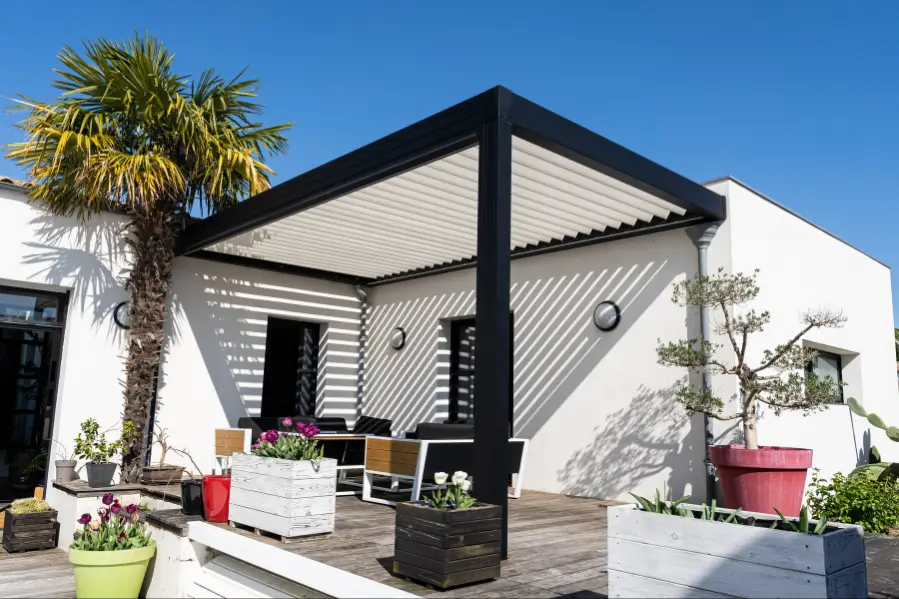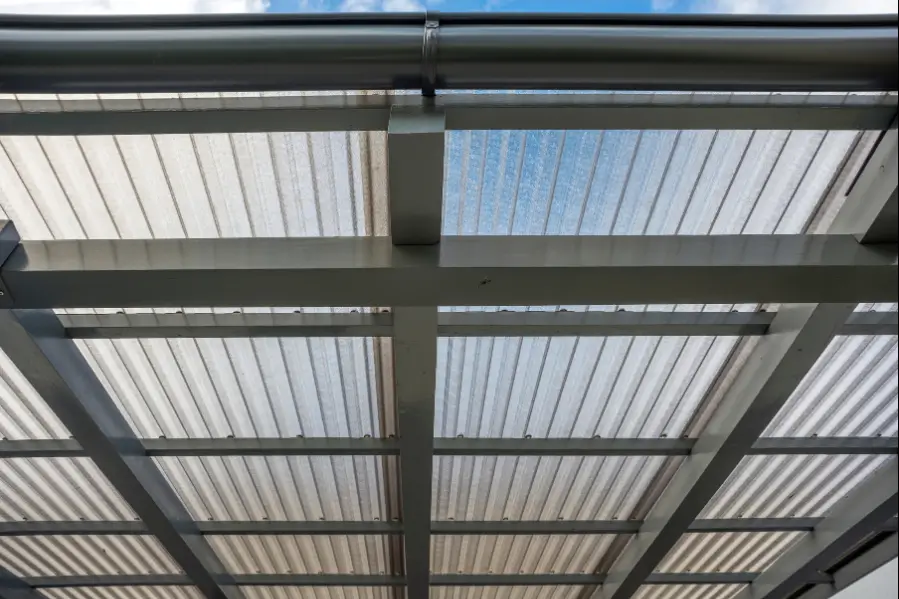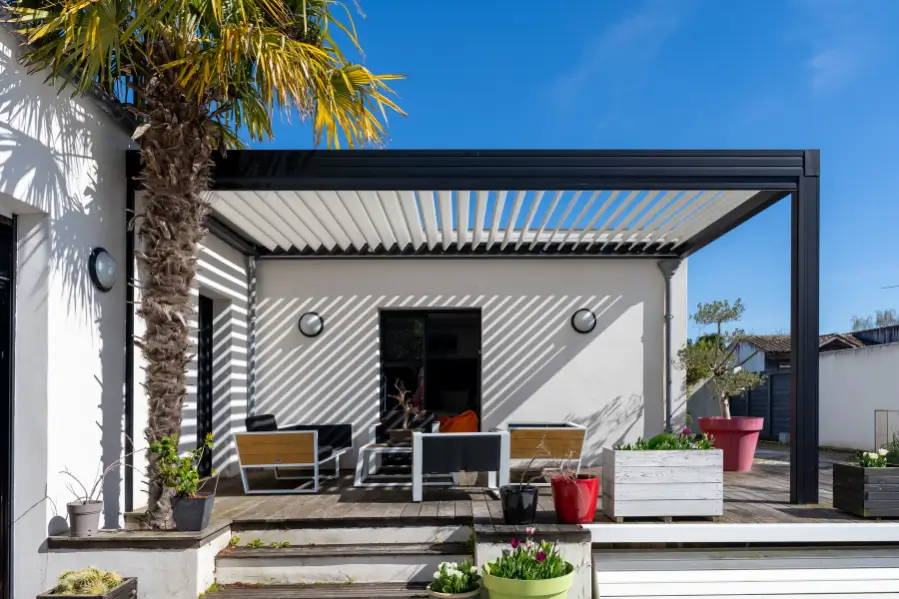If you’ve ever dreamed of transforming your backyard into a space where you can relax, host friends, or just enjoy the outdoors rain or shine, a metal roof-covered patio could be the perfect addition to your home.
Not only does a metal roof provide shade and shelter, but it also adds a touch of style and boosts your home’s value. Building a patio cover might sound challenging, but with a clear plan and the right materials, it’s definitely achievable—and the end result is worth it.
This guide walks you through each step, from setting up a solid foundation to putting on the finishing touches, so you can create a patio that’s both sturdy and stylish. Let’s dive in and bring your outdoor space to life!
Why Choose a Metal Roof Covered Patio?
A metal roof-covered patio offers several advantages. It provides shade during summer, protects against rain, and creates a comfortable outdoor space for gatherings. Insulated roof panels are a wise investment, offering enhanced durability and energy efficiency by keeping the area cooler in summer and warmer in cooler months. Extending a roof over a patio is a practical way to increase your outdoor living space, offering year-round protection and enhancing the flow between your indoor and outdoor areas.
Moreover, building a metal roof-covered patio enhances the overall look of your home. The combination of espresso-colored beams, smooth matte finishes, and sleek roof panels creates a sophisticated, contemporary appearance. With minimal maintenance, this patio cover can last for many years, providing an inviting outdoor retreat.
Materials and Tools Required
To complete this project of building metal roof covered patio, you’ll need the following materials and tools:
- Posts: 6×6 wood posts
- Roof Panels: 3-inch insulated panels with an 8-inch plank width for optimal durability and insulation
- Frame Beams: Espresso-colored 2×8 beams with a smooth matte finish
- Brackets and Mounting Hardware: Roof mount brackets, beam lift brackets, single bolts
- Electrical Wiring and Components: 20-amp circuit, 12-gauge wire, recessed lights, wireless dimmer switches
- Caulk and Sealing Material: Weatherproof grout-type caulking
DIY Guide to Build a Metal Roof Covered Patio

Building a metal roof-covered patio enhances your outdoor space and adds value to your home. To ensure durability and aesthetic appeal, choosing the best material for your covered patio is essential. Follow these steps for a durable, stylish 4K insulated roof mount patio cover.
Step 1: Preparing the Foundation and Brackets
Set up the foundation by pouring footings to support your structure. Attach post brackets to the footings and roof brackets where the patio cover will meet the house, aligning the roof brackets with the rafters for stability. If needed, drill pilot holes to secure the rafters, ensuring the roof frame has solid support.
Step 2: Installing Posts and Frame
Once the brackets are secure, slide 6×6 posts into place within the post brackets, fastening them securely on both sides. Attach espresso-colored 2×8 frame beams between the posts, using a flush beam lift bracket for a sleek look.
Check for gaps between brackets and posts, adding screws or bolts as necessary to maintain stability.
Step 3: Setting Up the Roof Panels
Install the roof panels with a 4/12 slope to allow adequate drainage. Place insulated roof panels on the frame, incorporating a fan beam in the center to support electrical components. Start from the front, aligning and securing the panels. Adjust for a zero-edge look if preferred, ensuring the panels have a flush finish.
Step 4: Installing Electrical Components
Run a 20-amp circuit with 12-gauge wire from the main power source to the patio cover, creating separate lines for different lighting areas. Use wireless dimmer switches for convenience, grouping lights for easy management.
Place the fan beam in the middle of the roof panels for running wires and mounting fixtures, drilling into the panels as needed to keep wiring neat.
Step 5: Caulking and Sealing
Apply grout-type caulk around the roof bracket edges to prevent water leakage, leaving the bottom open to allow trapped moisture to escape. Tape the edges and smooth the caulk for a clean finish, ensuring no gaps around brackets or seams.
Step 6: Adding Finishing Touches
Install 4-inch recessed lights in the fan beams by drilling holes and securing fixtures. Choose a zero-edge finish on the roof panels for a modern, minimalist look, and paint or stain beams and posts in a complementary color for added style. Regularly inspect and reapply caulk as needed for lasting weatherproofing.
Final Tips for a Durable Metal Roof Patio Cover

To ensure a sturdy, long-lasting patio cover, keep these final tips in mind:
- Opt for Single Bolts Over U-Bolts: Single bolts are more effective than U-bolts in securing beams to posts, providing better stability.
- Weatherproofing Maintenance: Regularly inspect the caulking and seals after harsh weather to maintain the weatherproofing. Reapply caulk as necessary, especially around the roof edges.
- Safety Precautions: Always adhere to electrical safety codes and check with local building authorities for any necessary permits. Double-check that all electrical components are securely installed to avoid any hazards.
Get Professional Help with Smart Remodeling LLC in Houston, Texas
When it comes to enhancing your home with a custom addition, Smart Remodeling LLC in Houston, Texas, delivers exceptional quality and tailored solutions to fit your lifestyle.
Whether you’re considering a new bedroom, expanding your kitchen or bathroom, adding a second story, or creating a custom outdoor kitchen and patio, their team ensures every detail aligns with your vision. Imagine transforming your backyard with a beautiful covered patio or an outdoor kitchen, perfect for cooking and entertaining year-round.
With Smart Remodeling LLC, you’re not just adding space—you’re upgrading your entire living experience.
Conclusion
Building a metal roof-covered patio creates a functional and inviting outdoor retreat that enhances the look of your home. By following these steps—from setting up a solid foundation to applying the final caulking—you’ll enjoy a durable, weather-resistant patio cover that stands up to the elements and serves as a year-round space for relaxation and entertainment. Happy building!






